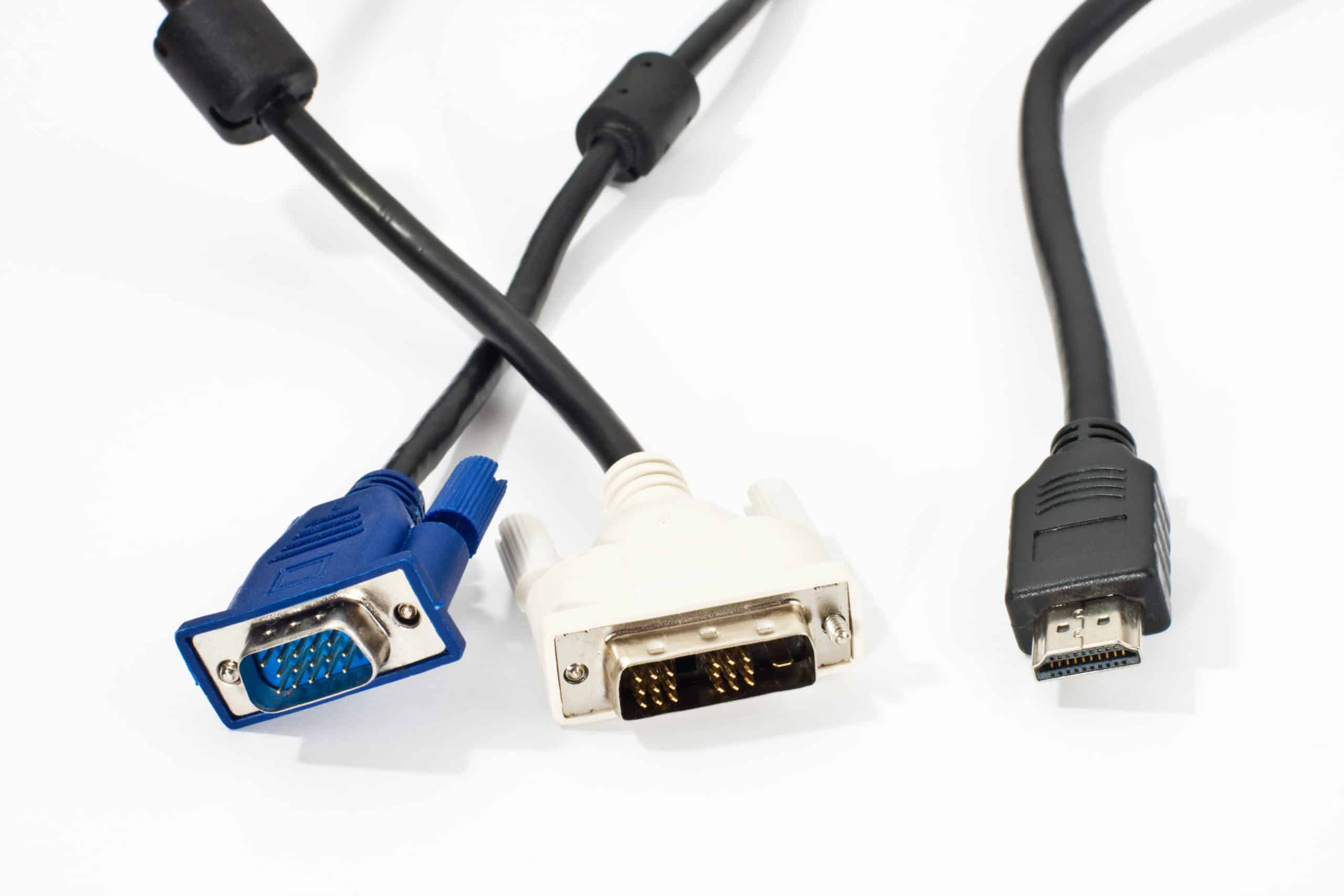If you were to look behind your TV, your video game console, a monitor, or on the back of your PC, you will see the connectors for cables. The connectors can be wildly different based on the age of the device. They are most likely HDMI, VGA, DVI or DisplayPort connectors. What are the differences between these?
HDMI (High-Definition Multimedia Interface)
You can use this connector for both visual and audio signal which makes HDMI the standard connection for HDTVs and gaming consoles. Are you interested in 4k visuals on your tv? If your display or TV has HDMI 1.4 you’ll be limited to only 3820×2160 4K at 30Hz. However, newer displays are coming with HDMI 2.0 connectors. With that you’ll be able to get 4K at 60Hz as well as 1440p at 144Hz and HDR support. It’s best to check to see what type of HDMI connector your TV/ monitor has before assuming you’ll be able to get 4K visuals. HDMI is also fully backwards compatible with DVI, so there is no loss of video quality when using an HDMI-to-DVI adapter or cable.
DisplayPort
While HDMI is the standard for TVs, DisplayPort is the standard for hooking up a computer to a monitor. Like HDMI, it can carry both visual and audio signals. Since the 2010 release of DP1.2, versions of DisplayPort have come with support for 4K. Since then, the introduction of DP1.4 increased that support to 4k at up to 144 Hz. As such, both Nvidia and AMD have DP1.4 built into their latest graphics cards. DisplayPort is also great for having a multiple monitor set up.
DVI (Digital Visual Interface)
DVI is on the road to obsoletion, but it hasn’t reached it just yet. As such, you can still find it on modern graphics cards. The video signal is basically the same as HDMI, but it does not have an audio signal with it. To get audio from a DVI connector an adapter would be needed for newer graphic cards. While DVI can’t support 4K displays, it can reach 144Hz refresh rates with a 1080p display. Just like the other cables can be adapted to DVI, DVI can be adapted to VGA with a passive adapter.
VGA (Visual Graphics Array)
VGA is the original connector back from the age of CRT monitors. Maxing out at 1080p 60Hz, this analog video connection has become obsolete. Newer devices no longer come with a VGA connection.
Conclusion
While DVI still has a seat at the table of video connections, the presence of both HDMI and DisplayPort will soon send DVI out to greener pastures with its predecessor VGA.

